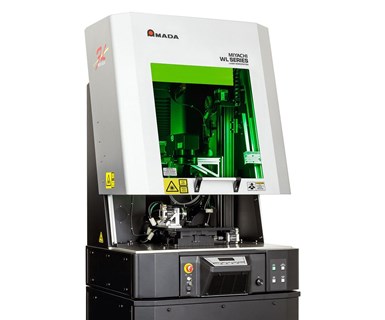Amada Miyachi's WL-300A Laser Workstation Marks Larger Parts
Amada Miyachi’s WL-300A laser processing workstation is designed for nanosecond pulsed fiber laser applications.
Share





Amada Miyachi’s WL-300A laser processing workstation, a larger version of the LMWS laser marker workstation, is designed for nanosecond pulsed fiber laser applications. The workstation is equipped with Amada Miyachi’s LMF fiber lasers (10-70 W).
The machine features a fast and precise motorized Z axis for focus adjustment, easy access to parts and tooling, and an optional XY table for step and repeat motion, the company says. Lens options include F-Theta 100 mm, 160 mm, 254 mm, and 420 mm for marking a variety of parts. An optional compact motorized rotary axis enables easier marking and welding on cylindrical parts. The M6 threaded-hole pattern mounting base plate eases fixturing. An extraction port with flexible tubing extracts harmful fumes created during the laser process.
The WL-300A can handle a variety of mark types, including line art graphics; shaded graphics; TrueType fonts; single-point or drill object arrays; data matrix or QR codes; and MS AutoDate, MS TextMerge, serialization, and barcode marks. Though primarily designed for laser marking and engraving applications, the laser source can also be used to weld and cut thin metals ranging to 0.010" (250 micron) thick.
Related Content
-
6 Machine Shop Essentials to Stay Competitive
If you want to streamline production and be competitive in the industry, you will need far more than a standard three-axis CNC mill or two-axis CNC lathe and a few measuring tools.
-
Inside the Premium Machine Shop Making Fasteners
AMPG can’t help but take risks — its management doesn’t know how to run machines. But these risks have enabled it to become a runaway success in its market.
-
Lean Approach to Automated Machine Tending Delivers Quicker Paths to Success
Almost any shop can automate at least some of its production, even in low-volume, high-mix applications. The key to getting started is finding the simplest solutions that fit your requirements. It helps to work with an automation partner that understands your needs.





















